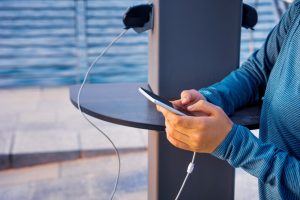() – Apple had new artificial intelligence functions to convert the iPhone 16 in a great success. But pre-release estimates point to a more muted early response than the company expected.
Apple needed the iPhone 16 to be a huge commercial success, after years of slow sales. Gone are the years when loyal Apple fans lined up to upgrade their device almost every year, and the company hasn’t given consumers much of a reason to upgrade since adding the 5G connectivity with the iPhone 12. A set of new software features that weaved AI throughout the device was now expected to be a success.
But, despite several eye-catching launch events, it’s unclear whether Apple has managed to convince consumers yet.
According to a blog post by Ming-Chi Kuo, an Apple analyst at TF International Securities, Apple sold only about 37 million units in the first weekend of pre-sales for the iPhone 16, a drop of more than 12% compared to the same period last year. In particular, demand for the higher-priced iPhone 16 Pro devices dropped sharply year-over-year compared to the launch of the iPhone 15.
A week after pre-sales began, Wedbush analyst Dan Ives estimated that pre-sales were only slightly higher than Kuo’s estimate, about 40 million units. CFRA Research technology analyst Angelo Zino also said sales data from the first weekend of pre-orders pointed to a year-over-year decline.
Perhaps more than the number of devices customers purchased during the pre-sale season, Apple would have to worry about which phones in the iPhone 16 line consumers are choosing, given that updates to standard devices make them comparable in many aspects to the Pro models. Analysts say there appears to have been greater demand for the lower-priced iPhone 16 and iPhone 16 Plus devices than the Pro and Pro Max, which could impact average selling price and total revenue for iPhone sales.
In the first weekend of pre-sales, Apple sold 9.8 million iPhone 16 Pro and 17.1 million iPhone 16 Pro Max devices, down 27% and 16% from the same period last year, respectively. according to Kuo. In comparison, sales of the standard iPhone 16 and Plus increased slightly compared to the iPhone 15.
The problem, Zino said, is that entry-level iPhone models might simply be too good.
“Since this is largely a software update cycle, my concern is that there was a greater mix of sales on the lower-priced iPhone 16 than on the higher-priced devices,” Zino said. “If you look at the standard devices, they got a big upgrade in terms of their internal cameras and processors.”
Kuo also reported shorter delivery times for the iPhone 16 Pro models (one to two weeks for the iPhone 16 Pro during first weekend pre-sales) compared to the iPhone 15, which had customers waiting between 3 and 4 weeks for your devices. He pointed to the fact that the iPhone maker’s much-touted “Apple Intelligence” AI features aren’t even available on the devices yet (they’re expected to begin rolling out in beta next month alongside iOS 18.1), as well as the company’s continued struggle with growing competition in China.
“You have to wait for voice-to-voice advertising to spread through the consumer base over the next two quarters” before users see the value of the new technology, Zino said.
Pre-sale response may indicate that the promise of built-in AI features alone isn’t enough to get Apple out of its iPhone doldrums. Apple can only do what it takes to improve the iPhone’s camera or adjust the screen size, and software updates that many consumers have doubts about are probably a harder sell. And for all but the most devoted Apple fans, analysts say most customers probably still don’t understand why the AI features would merit an upgrade.
It’s certainly still early days for the iPhone 16, and more have been sold since they became available in stores on September 20.
What’s more, the metrics that analysts use to estimate pre-sales don’t necessarily tell the whole story. Lead time, the delay between when consumers order their devices and when they are delivered, is considered by many to be a key indicator of demand. The logic is this: the more people order iPhones, the longer the wait will be.
Delivery times are shorter for the iPhone 16 than last year, but that may actually be a positive sign that Apple has improved its supply chain, allowing it to produce more phones, more quickly, according to analyst Canalys, Lex Chiew. CFRA’s Zino added that Apple may have also increased supply ahead of launch, given the pressure it faced to push through a big refresh cycle with the iPhone 16.
Another positive sign: T-Mobile CEO Mike Sievert told CNBC after the first week of pre-sales that the carrier had sold more iPhone 16s than iPhone 15s last year.
Apple won’t share any details about iPhone sales figures until it reports earnings next month, and even then the data will only include seven days of pre-sales and 10 days of regular sales. But most analysts still expect the iPhone 16 to prove a winner in the coming months despite a potential slow start, especially heading into the important final three months of the year.
“This is a very big holiday quarter and the supercycle for the iPhone 16 starts there, in our opinion,” Ives told , in an email.







![[Img #74683]](https://thelatestnews.world/wp-content/uploads/2024/12/The-main-mistakes-to-avoid-when-betting-on-electronic-sports-150x150.jpg)




![[Img #74683]](https://thelatestnews.world/wp-content/uploads/2024/12/The-main-mistakes-to-avoid-when-betting-on-electronic-sports-300x200.jpg)


Add Comment